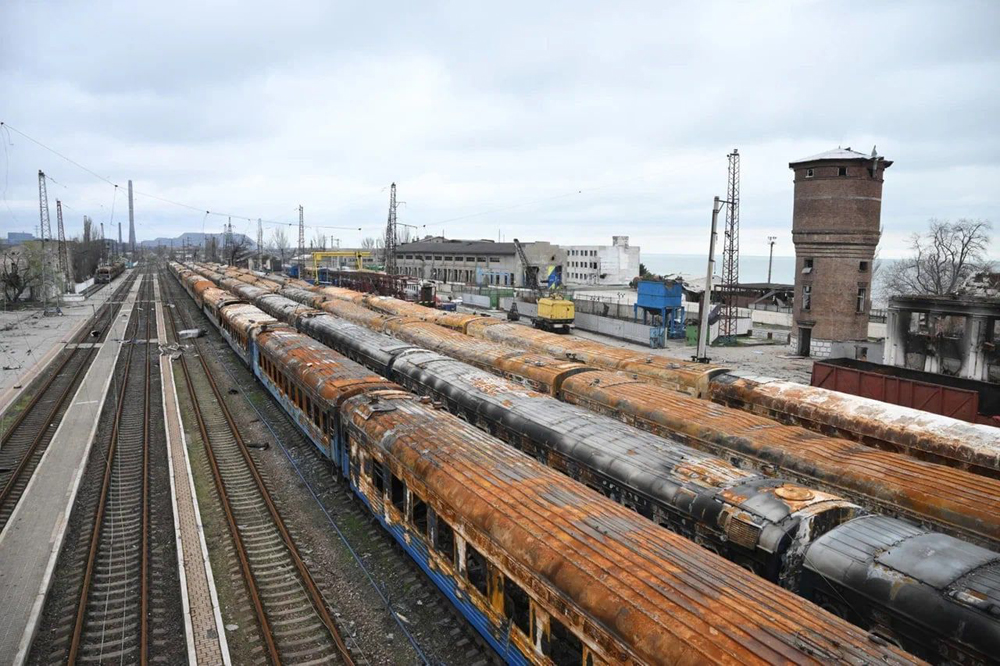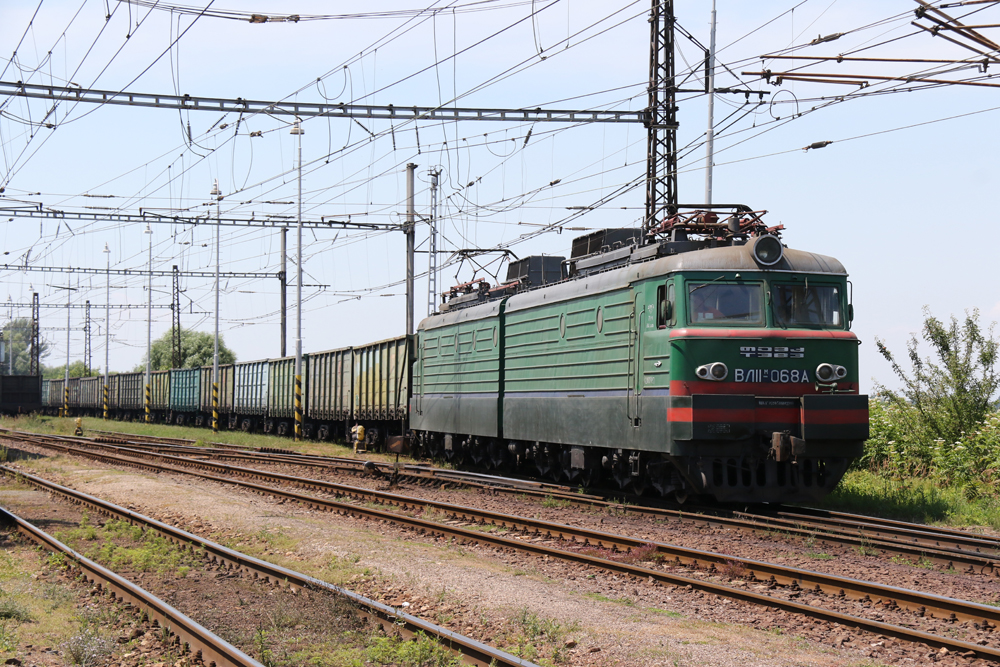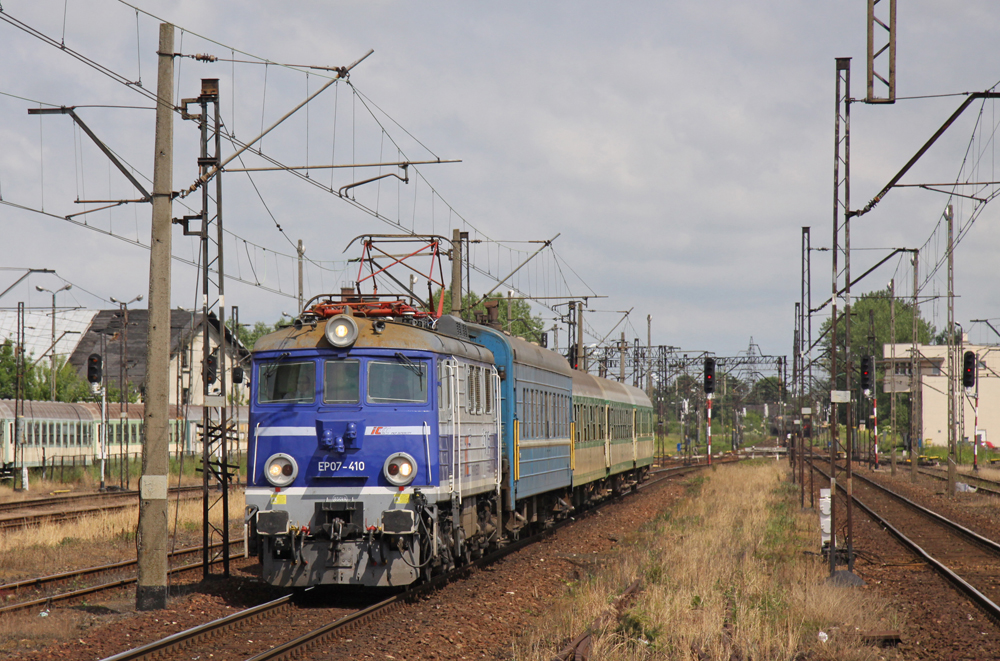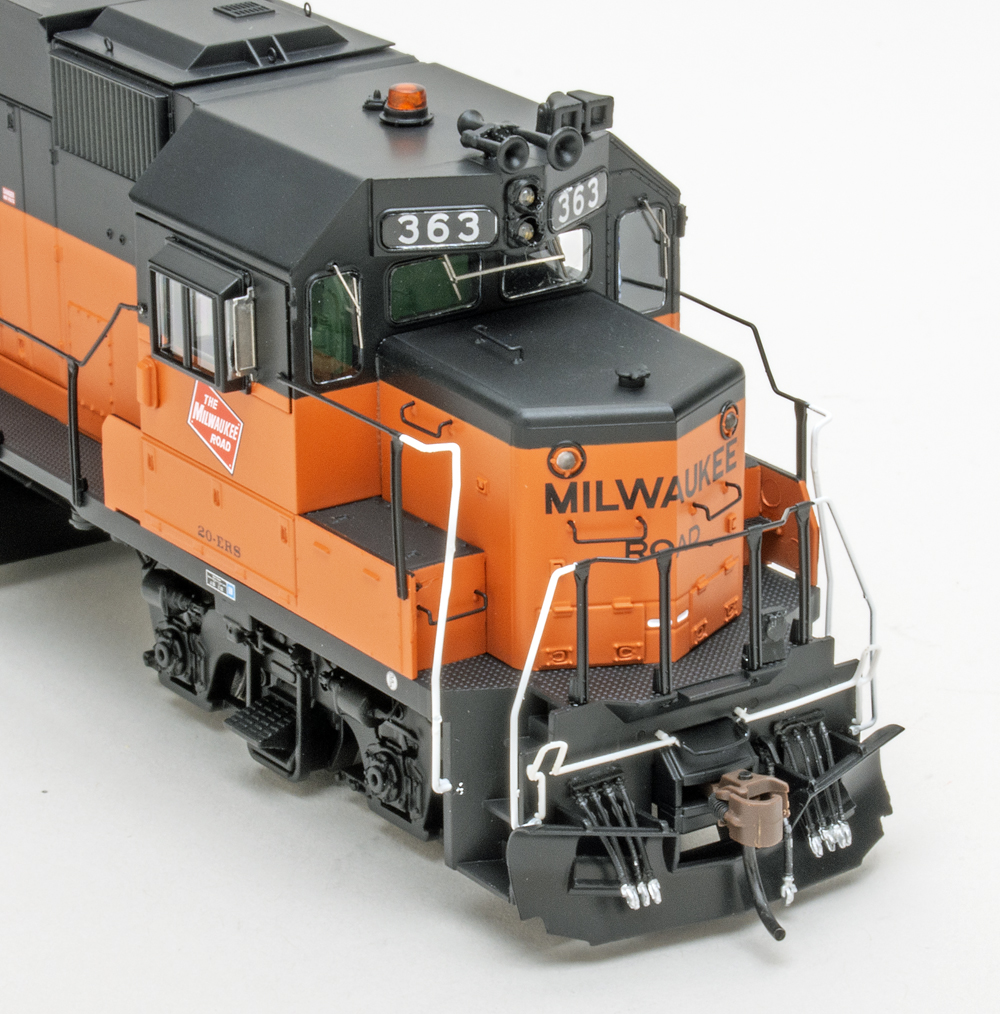
Ukraine and its rail network will enter the third year of full-scale war this Saturday, Feb, 24, following the Russian invasion of the country in 2022. While the front line in the country’s east has barely moved in a year, the role of the railways has evolved. The immediate urgency of evacuating civilians has passed, although such trains are still being run at times; the focus of national railway company Ukrzaliznytsia (UZ) has become a mixture of supporting the country’s economy and logistics for the armed forces.
The Ukrainian rail network remains a target for Russian forces, especially near the front lines, while the rail network in the occupied parts of Ukraine, and in Russia, has been the target for attacks by Ukrainian partisans or special forces.
Recapping recent rail developments in the conflict:
17.5-mile-long railcar barrier assembled by Russians
In the occupied Donbas region, it was reported in mid-February that Russian forces have constructed a 28-kilometer (17.5-mile) barrier of railcars on the mainline between the cities of Donetsk and Melitopol/Mariupol. Specifically, the barrier is between Olenivka, southeast of Donetsk, and Volnovakha, which is the junction station for the 78-kilometer (49-mile) branch line serving the port city of Mariupol, which Russian forces occupied in May 2022.
The barrier is reportedly made up of over 2,000 former UZ cars found all over the region after it was occupied. There has been media speculation it may be the basis of a new Russian defense line; the front line is only 6 kilometers to the west, and the internationally recognised border between Ukraine and Russia is only around 40 kilometers to the east. The use of one track for this barrier on a double-track electrified line reduces capacity on what is the only Russian-controlled railway connecting Donetsk with occupied Crimea. While it may be a defensive line, it may also exist to make it harder for Ukrainian drone pilots to see trains moving on a line completely in range of Ukrainian artillery.
Hospital and food trains
UZ has now run more than 100 medivac hospital trains using specially converted cars, taking over 3,000 injured or ill civilians out of the conflict zones. Working with the non-governmental organization Doctors Without Borders, the rail company initially provided a four-car train, but quickly added another eight-car train now fully equipped as a mobile hospital.
Since November, UZ has also been operating a unique mobile catering train known as the Food Train, the brainchild of Howard G. Buffett (son of BNSF investor Warren Buffett) and entirely financed by his charitable organization, the Howard G. Buffett Foundation. The six-car train is designed to provide up to 10,000 meals a day to people in areas where power has been knocked out by Russian attacks. It is designed for fully autonomous operation, with generators for power and water tanks, plus crew accommodation. The train is comprised of a generator car; a refrigerator car equipped with freezers for storing food; a cold kitchen car for food preparation; a kitchen car for cooking meals; a crew car with sleeping berths and showers; and a baggage car with a 7,130-gallon water tank, plus filtration and pumping systems. UZ equipped the cars in its own shops. The train began operations by delivering meals to people in the Kharkiv and Izium area on Nov. 24. It is designed to operate for up at week without resupply, and normally has 14 catering specialists plus seven UZ staff onboard.
Buffett’s foundation has also committed funds to assist Ukraine in removing minefields, and to build a major grain transhipment center on the border with Hungary, enabling grain exports by rail.
Support for veterans
More than 10,200 UZ employees have joined the country’s military, and some are now either demobilized or injured, so considered as veterans. UZ has taken on the responsibility for helping its veterans, which number around 1,000, recover as well as providing them with new jobs within the rail industry. In January, UZ announced plans to create new a new security unit using drones to observe and inspect the rail network staffed by veterans.
Rail exports hit record levels

The attempt in 2022 and 2023 by Russia to blockade Ukraine’s ports and prevent international merchant ships from transporting grain from Ukraine’s Black Sea ports has been largely overcome, thanks to intervention by the Ukrainian military, which caused the Russian Navy to remove its ships from the western Black Sea around Ukraine’s coast. This has allowed the export of grain by both ship and rail, via neighbouring countries, to resume. According to government statistics in 2023, 22.3 million tons of cargo were transported through sea ports, and 34.4 million tons through land crossings – much of that by rail. In total, UZ moved 148.4 million metric tons of freight during the year.
As part of its response to the invasion, the European Union — which borders Ukraine in the west — has relaxed many of its trade rules to assist the Ukrainian economy. The decision to allow Ukrainian farmers to sell their produce in European countries led to complaints from farmers in neighbouring Poland and Slovakia, who say they are being undercut unfairly. As a result, farmer groups have resorted to blockading highways and allowing only a handful of trucks through daily – although trucks carrying civil and military assistance from western countries have not been restricted. These blockades, which occurred in 2023 and have restarted in 2024, have led to more freight going by rail. UZ, working with Polish rail company PKP, introduced intermodal trains carrying semi-trailers between the two countries to avoid the highway blockades.
The Polish protests took a new turn today (Tuesday, Feb. 20), with farmers releasing Ukrainian grain from a train in the Polish border town of Medyka. UZ said the grain involved was bound for Germany, not Poland, in keeping with a ban on grain exports to Poland enacted in April 2023. Ukraine’s agricultural minister condemned the move, saying it was “unacceptable and contradicts common Ukrainian-Polish goals.”
The road blockades at western borders have helped increase exports by rail although in most cases it is commodities like iron ore, coal and grain that are being moved, which wouldn’t normally go by road. In January, UZ reported export volumes up by 25% compared to January 2023, with iron ore — bought by steelworks in Poland and Slovakia —increasing nearly threefold to 3.7 million tons in a month. Some 3.4 million tons of grain was also exported by rail in January.
UZ and partners are working to make its export capability compatible with neighbouring European countries. In October 2023, UZ — working with Austrian rail freight company Rail Cargo Austria and German freight car leasing firm VTG — started intermodal trains connecting Kyiv and the Hungarian capital Budapest. In November 2023, the United States Agency for International Development (USAID) agreed to help UZ modernize the main route into Poland used for grain exports; as part of this agreement, the line from border to the western Ukrainian city of Lviv will be rebuilt with both Ukrainian 5-foot gauge and standard gauge track, allowing European freight and passenger cars to operate as far as Lviv. During 2023, UZ announced it had built the first standard-gauge grain car in its fleet. USAID has previously supplied over 100 diesel generators to UZ as emergency power backup systems.

While Russian air and missile attacks have frequently targeted Ukraine’s power network, fewer attacks are successful than in 2022, thanks to air defense systems provided by allied countries. However, as many lines are electrified, successful attacks bring trains to a standstill until either repairs are made, or diesel locomotives arrive to haul the stranded trains. In late 2023, UZ bought what it describes as a strategic reserve of diesel fuel directly from ExxonMobil, which delivered the 30,000-ton consignment to the port of Klaipeda, Lithuania. This purchase was one of many UZ has highlighted as directly with suppliers or manufacturers rather than through wholesale intermediaries; the stated aim of this approach is to make prices and costs transparent and to remove the opportunity for graft and corruption. UZ has also been enhancing its security at locomotive shops to prevent diesel fuel theft.
Passenger traffic up, too
UZ carried 25 million passengers in 2023, with a record 2.1 million travelling to the European Union. Travel by plane from Ukraine is not possible, and as a result UZ is partly replacing the former airline routes. While it is carrying more people and adding new routes it is also losing money on international journeys, so plans have been announced for changes to fares, especially on the busiest route connecting Kyiv with the Polish capital Warsaw, where some fares will increase by more than 70%. Fares on alternative routes into Poland will not change by much, and later this year more options will become available. Czech private rail operator Regiojet intends to offer services from Czech capital Prague via Košice in Slovakia to the border station of Chop and on to Mukachevo in Ukraine using the 37-kilometer standard gauge section that already existed. UZ will cooperate with Regiojet to operate the train in Ukraine.
— Updated at 1:20 p.m. CT with Polish protest involving grain movement by rail. Trains editor David Lassen contributed to this report.













